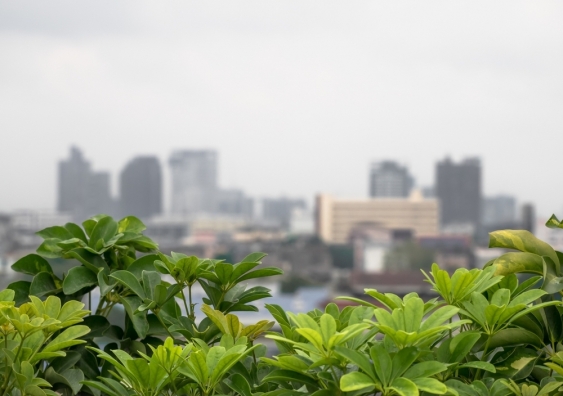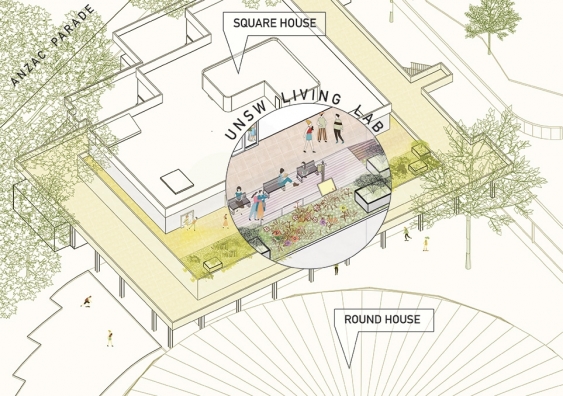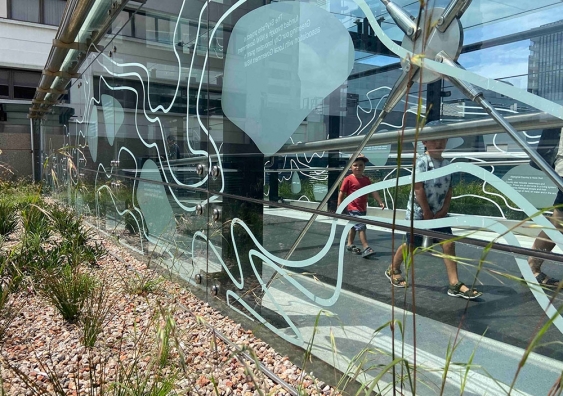Transforming forgotten urban spaces into SkyParks
The retrofit of our cities in the age of the Anthropocene is vital, says a UNSW researcher.
The retrofit of our cities in the age of the Anthropocene is vital, says a UNSW researcher.

Emi Berry
Corporate Communications
0413 803 873
e.berry@unsw.edu.au
In 2019, the buildings and construction industry accounted for almost 40 per cent of carbon emissions globally, according to the International Energy Agency. While sustainable new buildings can help in reducing emissions, UNSW researcher Alexander Georgouras from UNSW Arts, Design & Architecture, says finding ways of modifying existing buildings is a more effective way of creating efficient and sustainable cities.
“Although sustainable new buildings are part of the solution – with less than 2 per cent of building stock turnover annually we require the knowledge and agency to transform our existing buildings,” explains Mr Georgouras.
“The retrofit of our cities in the age of the Anthropocene is vital.”
This is where urban greening initiatives such as the Greening Our City’program come into play. Funded by the NSW Government, the program supports local councils across Greater Sydney to increase urban greening by enhancing tree canopy in local parks, streets, and neighbourhoods. More trees mean more shade, cooler suburbs, and attractive places to live and work.

SkyParks is a pilot project aimed at greening our existing rooftop and balcony spaces. Image: Supplied
As part of the Greening Our City initiative, UNSW is collaborating with Randwick and Waverley councils on project ‘SkyParks’ to research cooling and greening at the SquareHouse terraces, which are located on the University’s Kensington campus.
The University will transform a SquareHouse balcony into an inviting and adaptable space that can be used for learning. This initiative will help advance research to help develop cost-effective methods for the greening and cooling of under-utilised urban spaces.
“SkyParks is a pilot project aimed at greening our existing rooftop and balcony spaces. Through a series of pilot sites, we hope to identify the barriers, benefits, and ultimately best practice solutions to adapting our existing buildings.
“Although many of these forgotten spaces are currently under-utilised, they have the ability to create a more climate-resilient and socially equitable city,” explains Mr Georgouras.
“Having already completed three pilot sites, we are looking forward to transferring the knowledge and fill in any gaps, with the inclusion of a UNSW site.”
UNSW Arts, Design & Architecture Dean, Professor Claire Annesley, says harnessing the space available on built structures for innovative landscape designs can make our learning and built environments cooler, greener and enhance the University as a welcoming place to live, work and visit.
“We will install equipment to monitor the weather and environmental conditions to better understand the benefits and requirements for greening built-up spaces and plan to incorporate the project into a cross-disciplinary curriculum.
“This could include students assisting in the quantification of cooling benefits, energy savings, improved air, and water quality as well as the social and community benefits of rooftop gardens,” says Prof. Annesley.

“Having already completed three pilot sites, we are looking forward to transferring the knowledge and fill in any gaps, with the inclusion of a UNSW site,” said Alexander Georgouras. Photo: Supplied.
Mr Georgouras says the benefits of embracing these technologies are vast. “Growing concerns around issues such as urban heat, energy consumption, biodiversity loss and localised flooding are mitigated through embracing these initiatives. A site on campus will not only allow us to research to what degree this happens but also provide a living lab, for students to engage with this approach to city transformation.”
Utilising a collaborative approach, the site will provide opportunities for cross-faculty research and foster the development of new relationships across the University, says Mr Georgouras.
Read more: Family-friendly apartments are key to a compact city
“Furthermore, our local government partner, Randwick City Council – upon where UNSW Kensington Campus is located – is interested in how this retrofit model can be encouraged within their local government area and incorporated into future developments across the region.
“It is an exciting and challenging time to be involved with charting new directions for our existing urban habitats. Where better to experiment than on campus?”